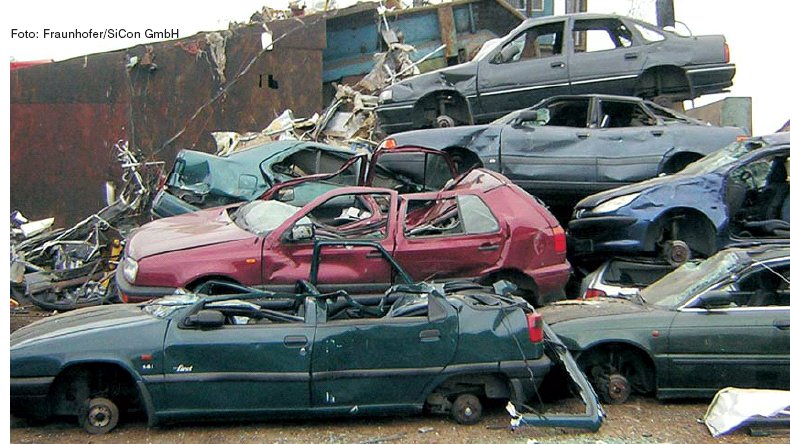Plants & Projects


Bioplastics in Waste Streams
Since years the amount and diversity of products made from bio-based plastics is continuously increasing, especially in the packaging segment. Actually, polylactic acid (PLA) is the most important bio-based polymer on the packaging market and because many concepts use PLA as composite material or in blends, the recycling of PLA-containing waste streams is very difficult with conventional processes (e.g. re-granulation), if not impossible.

Contaminated plastics from waste electro(nic) equipment (WEEE) and end-of-live cars (ELV)
After the CreaSolv® Process demonstrated its suitability for the recycling of various plastics in earlier projects, in September 2010 the “Poly-Ressource” Project was started in line with the “SME-innovative” Program of the German Federal Ministry of Education and Research (BMBF). This joint research project was aimed at the collection and processing of contaminated waste plastics from shredder residues from the processing of waste electro(nic) equipment (WEEE) and end-of-live cars (ELV) in Europe and the production of recyceled plastics conforming to the regulations.

Polyamide from Grinding Brushes
As leading producer of special polyamide fibres filled with abrasive corn (diamond, silicium carbide or ceramic) Hahl Filaments GmbH in Munderkingen, Germany is an important supplier to manufacturers of technical brushes for deburring of components. The annual production of abrasive filaments is about 800 tons with a process related yield loss of 160 tons.

Polymers from shredder-light-fractions from WEEE
In a project with the Austrian Center of Excellence Electronics & Environment KERP in Vienna (today iPoint) Fraunhofer IVV has proven that heavily polluted light shredder fractions can be recycled. With the CreaSolv®-Process the Electro- and waste-handling industry can produce plastics (HIPS, ABS), which meet the European "RoHS-Guideline".

Polyolefins from ELV shredder-light-fraction
Every end-of-life car is a source of raw material. During the today recycling process, polymers end up along with dust, slivers of metal and textile fluff in the non-metalic shredder residue (shredder-light-fraction). This mixes the plastics so indiscriminately that it has never been possible to seperate them into the individual types again and they are therefore used as reducing agents in blast furnaces. Toyota Europe, SiCon GmbH and Fraunhofer IVV addressed this issue in a pilot project (2006 - 2007).

Polymers from flame-retarded Electro(nic) Waste / Environmental Impact Assessment
In a worldwide comparison study of the British non-profit-organisation WRAP (The Waste and Resources Action Programme), that lasted from 1 October 2004 until 31 May 2006, the CreaSolv® Process performed ecologically and economically as the best one. This finding was supported by a comprehensive Environmental Impact Assessment according ISO 14040 (Appendix 5 of WRAP Final Report).

From Foam to Foam
In November 2003 the EPS – Loop project was launched by a consortium of eleven companies. This co-operation was based on the CreaSolv® Process and the main goal was the development and optimization of this recycling process for EPS waste. Additionally a concept for a cost efficient transport of EPS waste was be developed as well. The run-time of the project was 18 months and the total budget € 1.1 million.

The Kick-off!
In 2001 Fraunhofer IVV made a feasibility study for the CreaCycle GmbH and Heger GmbH for solvent-based Recycling of EPS waste with the aim to test an alternative to the traditional „shredder – compress – re-extrude“ approach, because the latter has problems with impurities and additives.
